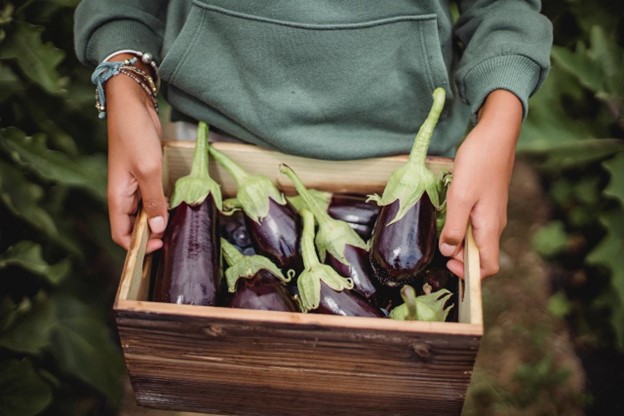
Photo by Pexels
Edible landscaping is a unique blend of beauty and utility, offering a creative way to produce food right in your own backyard. This approach to gardening allows you to transform your outdoor space into a bountiful edible paradise that can feed your family while also enhancing the aesthetic appeal of your property. But creating an edible landscape that’s both functional and visually pleasing requires careful planning and design.
This article, courtesy of Price & Co. Real Estate, will guide you through the process, providing practical tips and insights on how to successfully incorporate fruits, vegetables, herbs, and even edible flowers into your landscape, turning it into a feast for the eyes and the palate.
Try Edible Ornamental Grasses
Enhance your property’s borders with beautiful ornamental grasses that do more than just look good. The gentle swaying of lemongrass and the delicate charm of wild oats create living boundaries that appeal to both your eyes and your taste buds. This creative mix combines beauty and practicality, offering visual appeal while also providing a delightful culinary touch.
Visual Delight with Edible Charm
Create a garden that combines beauty and utility effortlessly. Elevate your landscape by incorporating plants like nasturtiums, which add vibrant colors to salads, and rhubarb with its tangy crimson stems. This balanced fusion of aesthetics and practicality transforms your garden into a delightful oasis for both the eyes and the palate.
Blending Colors, Textures, and Forms
Craft a colorful and textured landscape that’s a feast for the senses. Blend lettuce’s lush leaves, artichoke’s elegant fronds, and the delicate tendrils of bean plants to create a living tapestry that both pleases the eye and fulfills your culinary wishes. In this lively scene, your garden becomes a haven for visual enjoyment and delicious treats.
Group Your Plantings Strategically
Organize your plants based on their sunlight and watering needs to create a thriving edible garden. Group sun-loving plants like tomatoes, peppers, and basil together, while providing shaded spots for mint and cilantro to grow comfortably. In this well-planned garden, each plant plays its part in a harmonious symphony of growth and nourishment.
Opt for Raised Beds, Containers
Make the most of your space by using raised beds and containers, turning even small areas into thriving gardens. Raised beds give you control over the soil, while containers allow you to move your plants to follow the sunlight. Hang baskets for strawberries and create vertical gardens for vegetables, letting nature flourish in tight spaces.
Harvest Wisdom from Online Resources
Dive into the wealth of online gardening knowledge to improve your gardening skills. Check out websites and forums like https://homegardenhero.com/ for a variety of tips and solutions, from planting advice to handling common gardening issues. Whether you’re a beginner or experienced gardener, these online resources can help you become a better gardener.
Share Your Bounty
There’s nothing quite so satisfying as eating what you’ve grown. Invite friends and family to celebrate your flourishing garden as a testament to your success. With the literal fruits of your labor, you can arrange a delightful feast that highlights your homegrown treasures. Add a special touch by designing bespoke invitations using free online templates, and be sure to explore free tools and features to make your invitation stand out.
Transforming your outdoor space into an edible landscape that seamlessly blends functionality and aesthetics is not only a rewarding endeavor but also a sustainable and delicious one. By carefully selecting plants, designing with purpose, and nurturing your garden with care, you can cultivate a haven that not only pleases the eye but also nourishes your body and soul. As you embark on this journey, remember that the beauty of an edible landscape lies not just in its appearance but in the joy of harvesting your own produce, sharing meals with loved ones, and fostering a deeper connection with nature.
